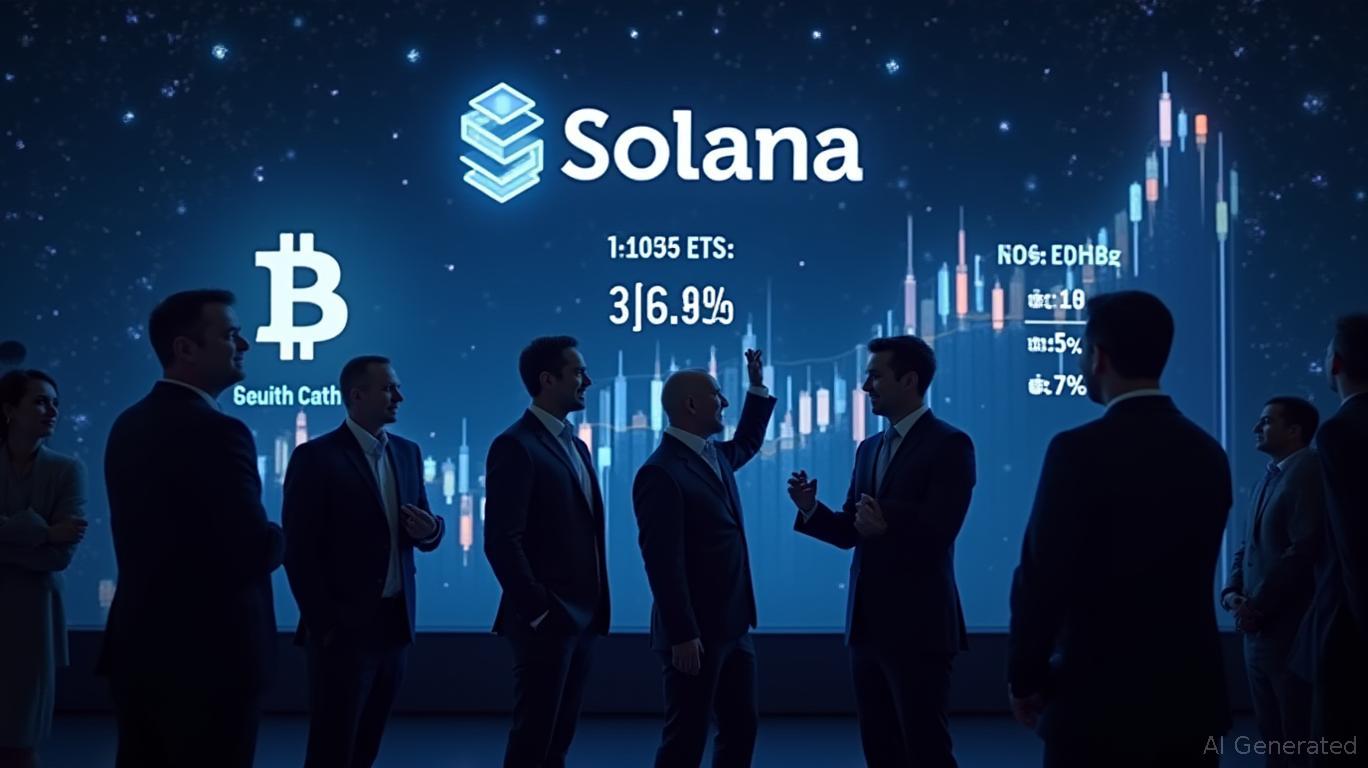LUNA Drops 77.43% Over the Past Year as Market Volatility Persists
- LUNA plummeted 0.95% in 24 hours, with a 77.43% annual decline amid market uncertainty. - Analysts cite regulatory scrutiny, macroeconomic pressures, and waning institutional interest as key drivers of its bearish trend. - Short-term resilience contrasts with long-term challenges, as traders monitor technical levels for potential reversals. - Backtested strategies using 10% volatility thresholds aim to assess profitability amid LUNA's erratic price behavior.
As of November 2, 2025,
LUNA’s latest price fluctuations underscore the difficulties digital currencies face amid changing investor attitudes and broader economic shifts. Experts believe that unless there are substantial improvements or foundational changes in its ecosystem, the token may find it hard to regain strong upward momentum. The steep annual drop highlights the inherent risks of investing in digital assets within such a speculative and fast-changing environment.
LUNA’s price path has been influenced by a combination of market forces, such as increased regulatory oversight, challenging economic conditions, and waning interest from institutional players. While the token has shown some stability over the past month, the overall downward trend persists. Both traders and investors are keeping a close eye on important technical indicators and blockchain activity to assess whether the current trend will reverse or continue.
Backtesting Strategy Hypothesis
When considering trading tactics for LUNA, a typical method involves backtesting signals that rely on certain volatility benchmarks. For instance, one might evaluate the results of entering trades after a 10% drop from a recent high or following a single-day loss of 10% or more. These criteria can act as signals to open positions, with stop-loss and take-profit points set according to past price movements and risk tolerance. The objective is to analyze whether this approach would have produced profitable trades over time.
Disclaimer: The content of this article solely reflects the author's opinion and does not represent the platform in any capacity. This article is not intended to serve as a reference for making investment decisions.
You may also like
Bitcoin Updates: Swiss Crypto Lending Offers 14% Returns Alongside Bank-Backed Insurance
- Swiss crypto lender Fulcrum offers 14% APR on stablecoins with Lloyd's insurance and FINMA regulation. - Platform uses 50% LTV over-collateralization and institutional-grade security to mitigate market risks. - Targets inflation-hedging investors by bridging traditional finance gaps with insured crypto yields. - Competes with alternatives like Bitget's zero-interest loans but emphasizes regulatory compliance and capital preservation.

Bitcoin News Update: Analyst Highlights How MSTR's Convertible Bonds Prevent Forced Bitcoin Sales
- MSTR's convertible debt structure allows debt repayment via cash, stock, or both, avoiding Bitcoin sales during market downturns. - The company raised €350M through a 10% dividend-bearing euro-denominated preferred stock offering to fund Bitcoin purchases. - Q3 results showed $3.9B operating income from Bitcoin gains, driving a 7.6% stock surge to $273.68 post-earnings. - Risks persist if Bitcoin fails to rally in 2028, potentially forcing partial liquidation amid $1.01B 2027 debt obligations. - MSTR hol

Solana News Today: Solana ETFs Surpass Bitcoin as Staking Returns Attract Institutional Investments
- U.S. spot Solana ETFs (BSOL/GSOL) attracted $199M in 4 days, outperforming Bitcoin/Ethereum ETF outflows. - 7% staking yields drive institutional inflows as investors rotate capital from major crypto assets. - Despite ETF success, SOL price fell below key support levels, raising concerns about $120 price floor. - Strategic staking and treasury purchases boosted Solana's institutional appeal, with $397M in staked assets. - Market remains cautious as ETF competition intensifies, with Bitwise's BSOL outpaci

Bitcoin News Today: Bitcoin’s Fourth Quarter Surge: Impact of Trade Disputes, Stronger Dollar, and Evolving Global Economic Strategies
- Bitcoin fell nearly 15% in October 2024, its worst quarterly start since 2022, driven by U.S.-China trade tensions, dollar strength, and macroeconomic caution. - A 100% U.S. tariff on Chinese imports and Fed rate-cut delays exacerbated selloffs, triggering $1.3B in liquidations during a flash crash below $103,000. - Key support levels at $107,000 and $101,150 face retests as traders warn of further declines, with market cap dropping below $3.6T amid fragile liquidity. - Wintermute denied Binance lawsuit
